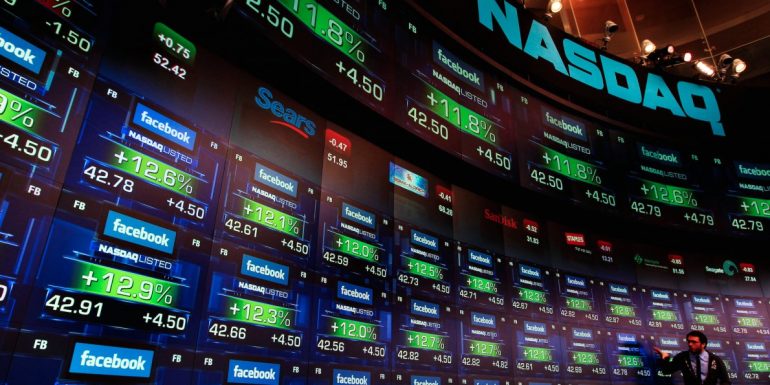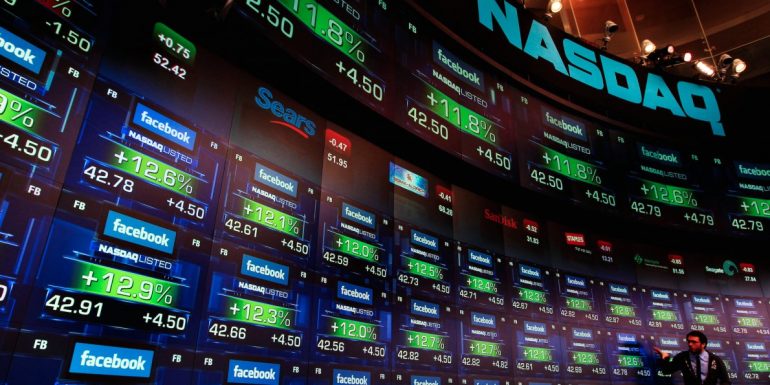At the point when individuals talk stocks, they are normally discussing organizations recorded on the real stock trades like the New York Stock Exchange (NYSE) or the NASDAQ. The real American organizations are recorded on the NYSE, and it can be troublesome for speculators to envision a period when the NYSE wasn’t synonymous with contributing.
Be that as it may, obviously, it wasn’t generally thusly; there were many strides along the street to our present arrangement of trade. You might be astonished to discover that the primary stock trade flourished for quite a long time without a solitary stock being exchanged.
In this article, we will take a gander at the advancement of stock trades, from the Venetian States to the British cafés, lastly to the NYSE and its brethren. (To skirt the history lesson and bounce straight into current occasions, look at Getting To Know Stock Exchanges.)
The Real Merchants of Venice
The cash moneylenders of Europe filled imperative holes left by the bigger banks. Moneylenders exchanged obligations between each other; a bank hoping to empty a high-hazard, high-premium credit may trade it for an alternate advance with another loan specialist. These moneylenders likewise purchased government obligation issues. As the common development of their business proceeded with, the banks started to offer obligation issues to clients – the main individual financial specialists.
In the 1300’s, the Venetians were the pioneers in the field and the first to begin exchanging the securities from different governments. They would convey slates with data on the different issues available to be purchased and meet with customers, much like an intermediary does today. (To take in more about the historical backdrop of cash loaning, see The Evolution Of Banking.)
The First Stock Exchange – Sans the Stock
Belgium gloated a stock trade as far back as 1531, in Antwerp. Specialists and moneylenders would meet there to manage business, government and even individual obligation issues. It is odd to think about a stock trade that managed solely in promissory notes and bonds, however in the 1500’s there were no genuine stocks. There were many kinds of business-agent associations that created wage like stocks do, however there was no official offer that changed hands.
Each one of Those East India Companies
In the 1600’s, the Dutch, British, and French governments all offered contracts to organizations with East India in their names. On the cusp of colonialism’s high point, it appears like everybody had a stake in the benefits from the East Indies and Asia aside from the general population living there. Ocean voyages that brought back products from the East were greatly dangerous – over Barbary privateers, there were the more typical dangers of climate and poor route.
To diminish the danger of a lost ship destroying their fortunes, deliver proprietors had for some time been in the act of looking for financial specialists who might set up cash for the voyage – equipping the ship and team as a byproduct of a level of the returns if the voyage was fruitful. These early restricted risk organizations regularly went on for just a solitary voyage. They were then broken down, and another one was made for the following voyage. Speculators spread their hazard by putting resources into a few unique ventures in the meantime, in this manner playing the chances against every one of them finishing off with catastrophe. (For additional on how this training plays out today, see: The Importance Of Diversification.)
At the point when the East India organizations shaped, they changed the way business was finished. These organizations had stocks that would pay profits on all the returns from every one of the voyages the organizations embraced, as opposed to going voyage by voyage. These were the main present day business entities. This enabled the organizations to request more for their offers and fabricate bigger armadas. The span of the organizations, joined with imperial sanctions prohibiting rivalry, implied tremendous benefits for speculators.
A Little Stock With Your Coffee?
Since the offers in the different East India organizations were issued on paper, financial specialists could pitch the papers to different speculators. Shockingly, there was no stock trade in presence, so the financial specialist would need to find a dealer to complete an exchange. In England, most intermediaries and financial specialists did their business in the different coffeehouses around London. Obligation issues and offers available to be purchased were composed up and posted on the shops’ entryways or sent as a bulletin.
The South Seas Bubble Bursts
The British East India Company had one of the greatest upper hands in budgetary history—an administration supported restraining infrastructure. At the point when the financial specialists started to get enormous profits and offer their offers for fortunes, different speculators were eager for a share of any profits. The maturing monetary blast in England came so rapidly that were no principles or directions for the issuing of offers. The South Seas Company (SSC) developed with a comparative sanction from the ruler and its offers, and the various re-issues, sold when they were recorded. Prior to the main ship at any point left the harbor, the SSC had utilized its freshly discovered speculator fortune to open elegant workplaces in the best parts of London.
Supported by the achievement of the SSC—and understanding that the organization hadn’t done a thing aside from issue shares—other “businesspeople” surged in to offer new offers in their own particular endeavors. Some of these were as over the top as recovering the daylight from vegetables or, even better, an organization promising financial specialists partakes in an endeavor of such huge significance that they couldn’t be uncovered. They all sold. Before we congratulate ourselves for how far we’ve come, recall that these visually impaired pools still exist today.
Unavoidably, the air pocket burst when the SSC neglected to pay any profits on its pitiful benefits, featuring the contrast between these new offer issues and the British East India Company. The ensuing accident made the administration ban the issuing of offers—the boycott held until 1825. (To take in more, see Crashes: The South Sea Bubble.)
The New York Stock Exchange
The main stock trade in London was authoritatively framed in 1773, an inadequate 19 years before the New York Stock Exchange. While the London Stock Exchange (LSE) was bound by the law limiting offers, the New York Stock Exchange has managed in the exchanging of stocks, regardless, since its initiation. The NYSE wasn’t the primary stock trade in the U.S. notwithstanding. That respect goes to the Philadelphia Stock Exchange, yet it rapidly turned into the most intense.
Framed by intermediaries under the spreading branches of a buttonwood tree, the New York Stock Exchange made its home on Wall Street. The trade’s area, more than whatever else, prompted the predominance that the NYSE immediately achieved. It was in the core of all the business and exchange coming to and going from the United States, and in addition the local base for most banks and vast organizations. By setting posting prerequisites and requesting expenses, the New York Stock Exchange turned into an extremely affluent foundation.
The NYSE confronted almost no genuine household rivalry for the following two centuries. Its universal renown ascended pair with the expanding American economy, and it was soon the most vital stock trade on the planet. The NYSE had its offer of high points and low points amid a similar period, as well. Everything from the Great Depression to the Wall Street besieging of 1920 remaining scars on the trade – the 1920 bombarding left 38 dead and furthermore left exacting scars on a large number of Wall Street’s unmistakable structures. The less exacting scars on the trade came as stricter posting and revealing necessities.
On the global scene, London developed as the significant trade for Europe, however many organizations that could list universally still recorded in New York. Numerous different nations including Germany, France, the Netherlands, Switzerland, South Africa, Hong Kong, Japan, Australia and Canada built up their own stock trades, however these were generally observed as demonstrating reason for household organizations to occupy until the point when they were prepared to make the jump to the LSE and from that point to the major associations of the NYSE. Some of these worldwide trades are still observed as a perilous area in light of powerless posting rules and less unbending government direction. (For related perusing, look at Broadening The Borders Of Your Portfolio and Why Country Funds Are So Risky.)
In spite of the presence of stock trades in Chicago, Los Angeles, Philadelphia and other real focuses, the NYSE was the most intense stock trade locally and globally. In 1971, in any case, an upstart developed to challenge the NYSE administration.
The New Kid on the Block
The Nasdaq was the brainchild of the National Association of Securities Dealers (NASD) — now called the Financial Industry Regulatory Authority (FINRA). From its initiation, it has been an alternate kind of stock trade. It doesn’t occupy a physical space, as with 11 Wall Street. Rather, it is a system of PCs that execute exchanges electronically.
[ Further Reading: 5 Things to Difference Between Traders and Baju Batik Wanita ]
The presentation of an electronic trade made exchanges more proficient and lessened the offer ask spread — a spread the NYSE wasn’t above benefitting from. The opposition from Nasdaq has constrained the NYSE to develop, both by posting itself and by converging with Euronext to frame the primary trans-Atlantic trade. (To take in more, look at The Tale Of Two Exchanges: NYSE And Nasdaq and The Global Electronic Stock Market.)
The Future: World Parity?
The NYSE is as yet the biggest and, apparently, most intense stock trade on the planet. The Nasdaq has more organizations recorded, however the NYSE has a market capitalization that is bigger than Tokyo, London and the Nasdaq joined — and the merger with Euronext will make it even bigger. The NYSE, once firmly attached to the fortunes of disappointments of the American economy, is presently worldwide. In spite of the fact that the other stock trades on the planet have developed more grounded through mergers and the improvement of their residential economies, it is hard to perceive how any of them will oust the 800-pound gorilla that is the New York Stock Exchange.



